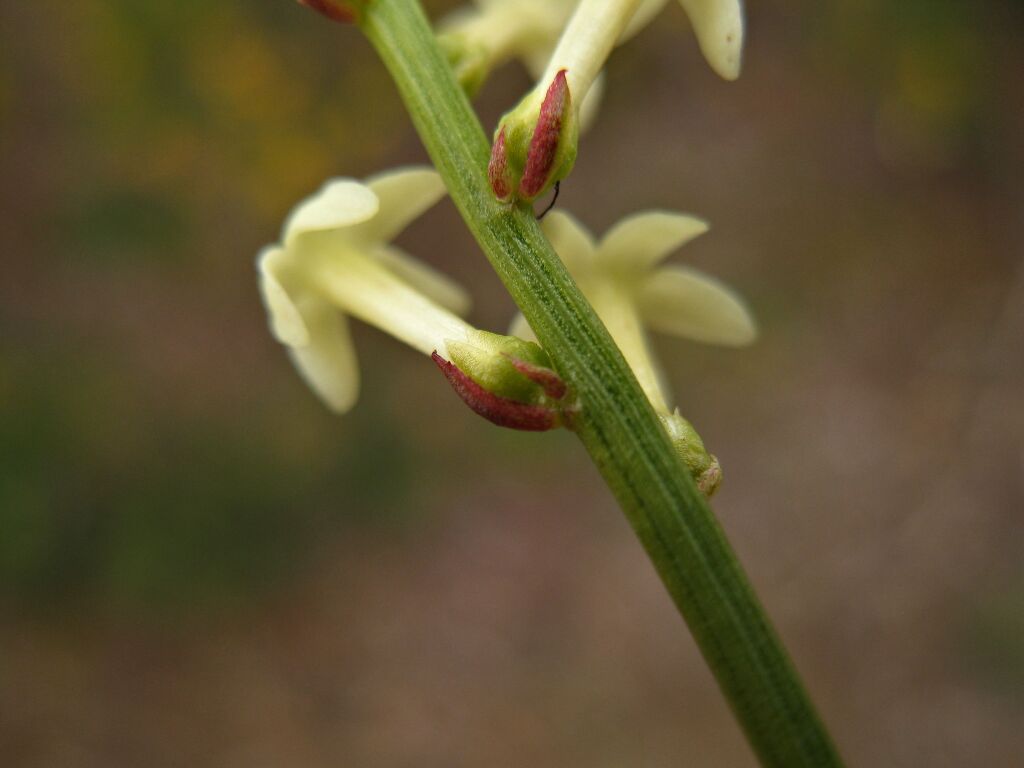Stackhousia aspericocca
Schuch.Glabrous non-rhizomatous perennial to 70 cm high; stems several-many, erect or ascending, simple or (rarely) branched in upper parts. Leaves thin to rather thick, narrow-linear to lanceolate, rarely broad-elliptic, 8–15(–35) mm long, 1–2.5(–3.5) mm wide. Inflorescence a dense cylindric or sparse unilateral spike; flowers solitary at nodes, each subtended by a bract and 2 bracteoles, all acute to acuminate, bracts c. 1–2 times as long as calyx, bracteoles conspicuous, c. half as long as bract, green. Hypanthium 0.7–1.3 mm long; sepals 1.1–2.2 mm long; corolla cream to deep-yellow, tube 5–8 mm long, lobes 2.8–5.6 mm long; gynoecium 3-partite. Mericarps usually 3, obovoid to narrow-ellipsoid, 1.9–2.5 mm long, rugose to reticulate, minutely asperate or glabrescent; basal cavity shallow.
LoM, MuM, Wim, GleP, Brid, VVP, GGr.
Two races (here regarded as subspecies) are distinct throughout much of the species’ range, sometimes occurring in adjacent different habitats, but some specimens are difficult to place with certainty. The type of S. aspericocca is difficult to assign to either of the subspecies.
Barker, W.R. (1999). Stackhousiaceae. In: Walsh, N.G.; Entwisle, T.J., Flora of Victoria Vol. 4, Cornaceae to Asteraceae, pp. 49–54. Inkata Press, Melbourne.
 Spinning
Spinning

